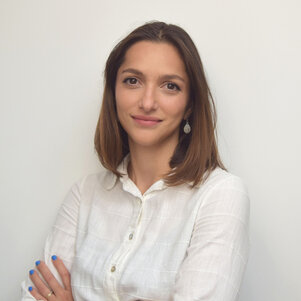This story is part of a larger article on designing the Train Stations of Tomorrow. Read the full article here.
Halina sees train stations as fascinating places because “they blur the line between scales: regional to local, community to person, and city to building.” Her PhD is about improving the integration of data in the sustainable (re)design of stations and their surroundings. She decided to focus on embodied carbon: simply put, the CO2 emitted while producing construction materials and assembling structures. “These processes cause a significant part of global emissions, making this one of the largest challenges in our transition to a carbon-neutral society.” Using Rotterdam Lombardijen as a case study, Halina created Low-Carbon Stations: a publicly available data-hub which outlines each research step behind her proposed method to minimize embodied carbon for station design.
Halina created a detailed dataset of train station Rotterdam Lombardijen and its surroundings meant to support low-carbon redesign. “It is one of 13 stations in Rotterdam with imminent (re)development plans. Ideally, all this construction should be as carbon neutral as possible.” | Images made by and owned by Halina Veloso e Zárate.
For the near-term future, Halina’s design methods can help architects and planners to integrate data into the (re)design of station areas: “Not only carbon data, but user perspectives as well. Because low-carbon stations still have to consider people’s needs and wishes.” She imagines how this realignment of priorities might guide designer’s decisions: “For example, increased usage of nature-based materials; reusing existing structures; design new structures for easy disassembly and recycling; and create lighter, less material-intensive designs.” Halina aspires for her research methods to become scalable and widely adopted across the Dutch transportation network, helping to achieve the decarbonization of the national built environment.
PhD-candidate Halina Veloso e Zárate
“My mother is an architect and urban planner. Even when I was very young, she would take me along on site visits and involve me in her work: can you count the houses with flat roofs on this street?”
Halina grew up in a planned city in Brazil but moved to Los Angeles for her master’s degree, which meant working fulltime in a team of 12 students on a vision for sustainably developing the city. Afterwards, while working as an urban designer, Halina came to a realisation: “Developers often forget to research the views of, and impact on, inhabitants.” She started investigating and discovered many issues. “For example, if a sidewalk is cracked or interrupted by stairs, a route to and from a station is not walkable for elderly or parents with strollers.” It reinforced her conviction that human-centred design is crucial for low-carbon urban development.

Halina Veloso e Zárate
“My mother is an architect and urban planner. Even when I was very young, she would take me along on site visits and involve me in her work: can you count the houses with flat roofs on this street?”
